Milkweed Plant
- November 6, 2023
- 0 comment
Milkweed, scientifically known as Asclepias, is a fascinating and ecologically important plant that belongs to the Apocynaceae family. This perennial herbaceous plant is renowned for its distinctive features, including clusters of unique, star-shaped flowers and long, slender pods filled with seeds attached to silky fibers.
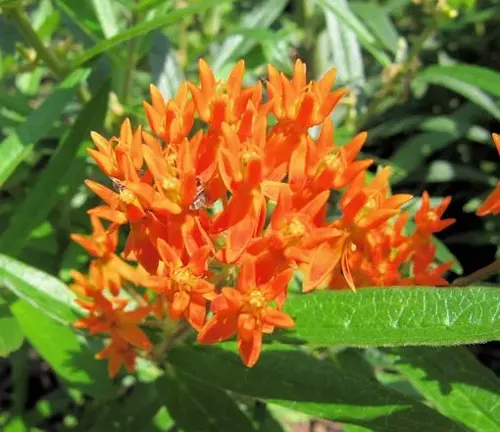

Milkweed is primarily native to North America, where it plays a crucial role in supporting the life cycle of monarch butterflies. Monarchs lay their eggs on milkweed leaves, and their caterpillars exclusively feed on these plants, making them an essential host plant. Milkweed’s nectar-rich blooms also attract various pollinators, such as bees and other butterflies.
Moreover, the plant has a rich history of practical uses, including medicinal properties and cordage material by indigenous peoples. Despite being considered a weed by some, milkweed is now gaining recognition for its ecological significance and role in conserving pollinators and biodiversity.
| Characteristics | Description |
| Scientific Name | Asclepias |
| Family | Apocynaceae |
| Plant Type | Perennial herbaceous plant |
| Native Habitat | Primarily North America |
| Height | Varies by species, typically 1 to 6 feet (0.3 to 1.8 meters) |
| Leaves | Opposite, simple, often with milky latex |
| Flowers | Unique, star-shaped, often in clusters |
| Flower Colors | Vary by species, including pink, purple, orange, and white |
| Pollinators | Attracts bees, butterflies, and other pollinators |
| Seed Pods | Long, slender pods filled with seeds attached to silky fibers |
| Monarch Butterfly Role | Essential host plant for monarch caterpillars |
| Practical Uses | Historically used for medicinal purposes and as cordage material |
| Ecological Significance | Supports pollinators and biodiversity conservation |
Botanical Beauty of “Milkweed Plant”
Milkweed, a plant of enchanting botanical beauty, belongs to the Asclepias genus. This perennial herbaceous wonder graces woodlands, meadows, and gardens with its distinctive allure. Its intrinsic charm is characterized by a fusion of unique features that make it a standout in the world of flora.
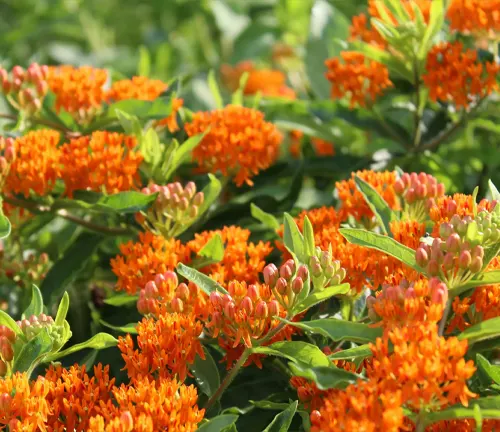
Woodland Elegance
Milkweed’s woodland elegance is undeniable. With its slender stems and opposite leaves, it stands tall, typically ranging from 1 to 6 feet, depending on the species. What truly sets milkweed apart is its exquisite star-shaped flowers that come in a range of colors, from soft pinks and purples to vibrant oranges and whites. These blooms, arranged in clusters, capture the essence of delicate natural beauty and are a visual feast for anyone who encounters them.
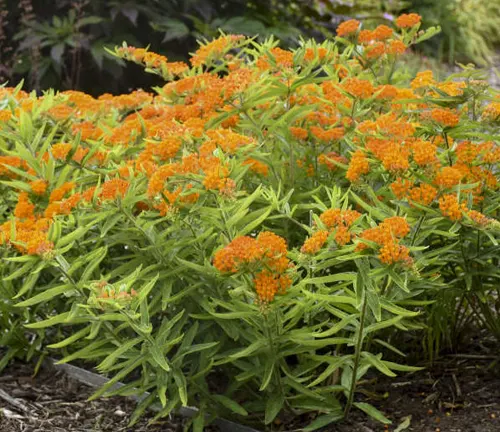
Ecological Importance
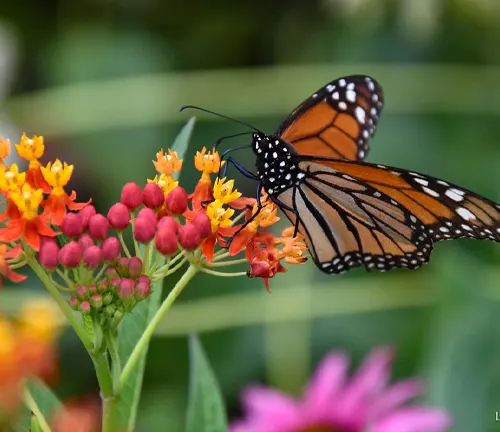
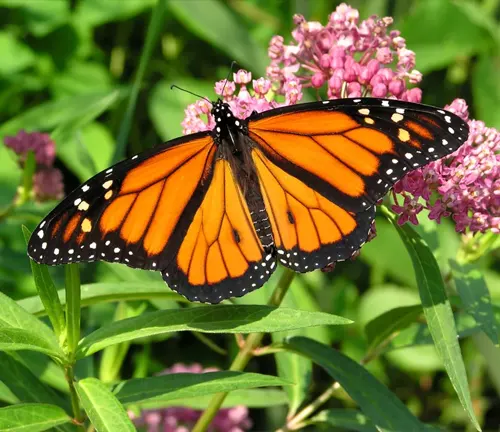
Beyond its visual appeal, milkweed plays a pivotal role in our ecosystem. Its ecological importance cannot be overstated. One of its most notable contributions is as a lifeline for monarch butterflies. Monarchs lay their eggs on milkweed leaves, and the caterpillars that hatch from these eggs exclusively feed on this plant. It is the cornerstone of their life cycle. The nectar-rich flowers also beckon other pollinators, including bees and various butterfly species, further enhancing its significance in supporting biodiversity.
Cultivation and Conservation
Cultivating milkweed is not only a hobby for gardening enthusiasts but a critical conservation effort. By growing milkweed in gardens and open spaces, individuals can provide essential habitat for monarch butterflies and other pollinators. Conservation organizations and community initiatives are actively promoting the planting of milkweed to combat the decline of monarch populations.
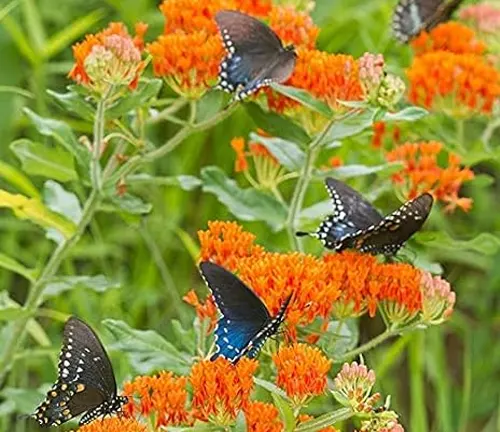
Fragrance
In addition to its visual splendor, milkweed emits a subtle, sweet fragrance. The scent of milkweed blossoms wafts through the air, adding an olfactory dimension to its allure. This fragrance is particularly attractive to pollinators, ensuring that these flowers are bustling with life during the blooming season.
Soil Stabilization
Milkweed’s significance extends beyond its ecological role. Its deep roots help stabilize soil and prevent erosion, making it a valuable asset in conservation efforts. In areas prone to soil degradation, milkweed acts as a natural solution, fortifying the land it inhabits.
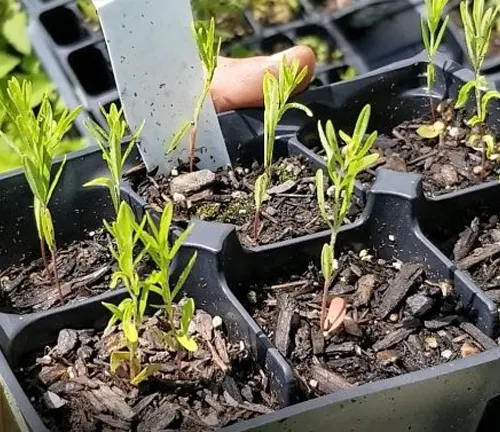
Common Uses
Throughout history, milkweed has found a variety of practical applications. Indigenous peoples used its fibers for cordage, and its latex has been harnessed for medicinal purposes. While it may have been considered a weed by some, modern awareness of its importance has reshaped its reputation.
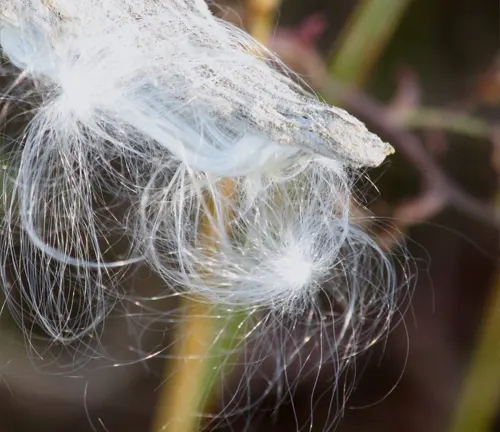
Benefits
The benefits of milkweed are multifaceted. By planting milkweed in gardens and natural landscapes, we not only contribute to the conservation of vital pollinators like monarch butterflies but also enhance the overall beauty and resilience of our environment. Its fragrance, deep roots, and rich history of usefulness further underscore its value.
Different Species
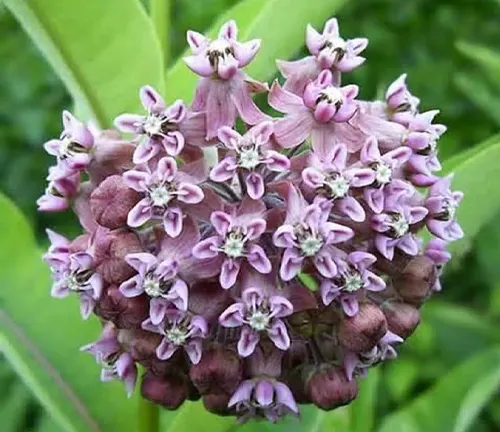
Common Milkweed
(Asclepias syriaca)
This is one of the most well-known milkweed species, with pink to purplish-pink flowers. It’s an important host plant for monarch butterflies.

Swamp Milkweed
(Asclepias incarnata)
As the name suggests, this species thrives in wetter, swampy areas. It has pink to mauve flowers and is a valuable nectar source for pollinators.

Butterfly Milkweed
(Asclepias tuberosa)
Known for its vibrant orange to yellow flowers, butterfly weed is a popular choice in gardens. It’s a favorite of both monarchs and other butterflies.
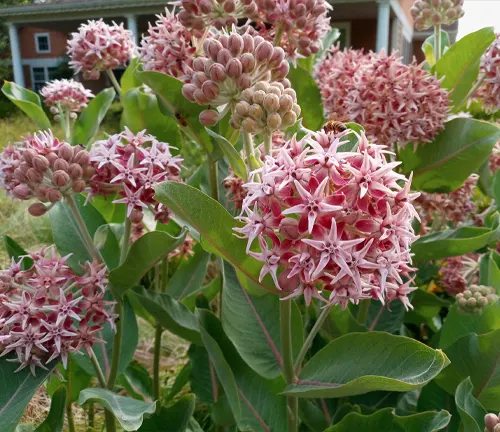
Showy Milkweed
(Asclepias speciosa)
This species is native to western North America and features pink to white, fragrant flowers. It’s a favorite of many pollinators.
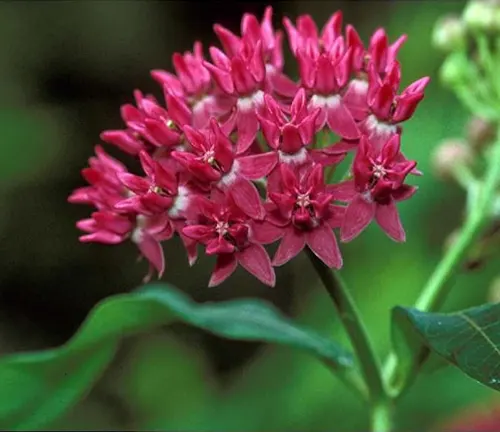
Purple Milkweed
(Asclepias purpurascens)
With deep purple or maroon flowers, this milkweed species adds a touch of elegance to the garden and is attractive to pollinators.
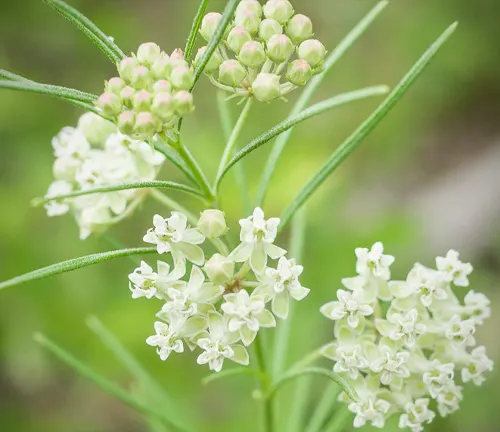
Whorled Milkweed
(Asclepias verticillata)
Characterized by its narrow leaves and small, white flowers, whorled milkweed is native to a wide range of habitats.
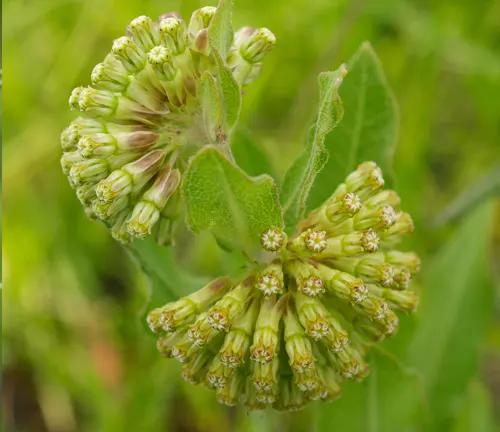
Green Milkweed (Asclepias viridiflora)
This species is notable for its greenish-yellow to purplish flowers. It’s often found in open woodlands and prairies.
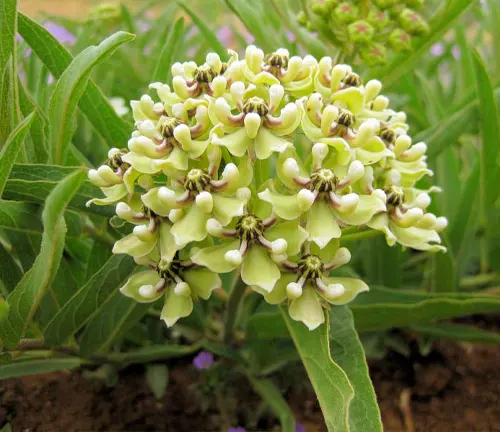
Antelope Horns
(Asclepias asperula)
Named for its distinctive seed pods that resemble antelope horns, this milkweed has greenish-white flowers and is native to the southwestern United States.
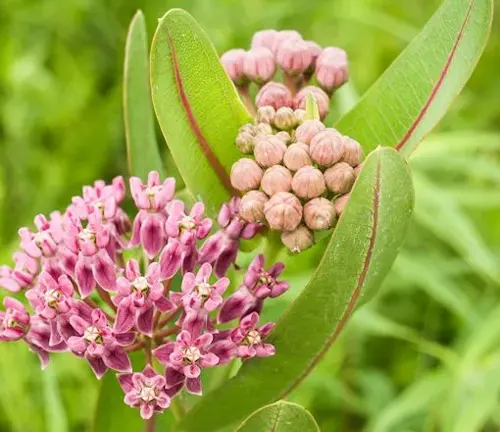
Prairie Milkweed (Asclepias sullivantii)
This milkweed species boasts pink to lavender flowers and is typically found in prairies and open meadows.

Hairy Balls Milkweed
(Asclepias physocarpa)
Known for its unique, spherical seed pods covered in fine hairs, this milkweed adds a playful element to gardens. It has pink and white flowers.
Frequently Asked Questions (FAQs)
- What is a Milkweed plant?
Milkweed is a perennial herbaceous plant belonging to the Asclepias genus. It is known for its distinctive features, including star-shaped flowers and seed pods with silky fibers. - Why is Milkweed important?
Milkweed is crucial for the life cycle of monarch butterflies. Monarchs lay their eggs on milkweed, and their caterpillars exclusively feed on it. It also supports a wide range of pollinators and helps stabilize soil. - How do I identify different species of Milkweed?
Milkweed species can be identified by their unique characteristics, including flower color, leaf shape, and growth habits. Field guides and online resources can help with identification. - Can I grow Milkweed in my garden?
Yes, many people cultivate Milkweed in their gardens to support pollinators like monarch butterflies. Different species have specific requirements, so it’s essential to choose the right one for your region. - Are all Milkweed species safe for monarch caterpillars?
Not all Milkweed species are suitable for monarch caterpillars. It’s essential to choose native species that monarchs have evolved with, such as Common Milkweed (Asclepias syriaca) or Swamp Milkweed (Asclepias incarnata). - How do I care for Milkweed plants in my garden?
Milkweed typically prefers well-drained soil, full sunlight, and regular watering. However, specific care requirements can vary depending on the species. - Can I collect Milkweed seeds or propagate it from cuttings?
Yes, you can collect Milkweed seeds and propagate it from cuttings. This is a great way to expand the presence of Milkweed in your area. - Is Milkweed invasive or a weed?
While Milkweed may be considered a weed by some, it plays a crucial role in supporting pollinators and biodiversity. Awareness of its ecological importance is increasing, and it is being actively cultivated for conservation. - Can Milkweed be harmful to humans or pets?
Some parts of the Milkweed plant contain a milky latex that can be toxic if ingested. It’s essential to be cautious and avoid consumption. However, it generally does not pose a significant threat if handled carefully. - How can I contribute to Milkweed conservation efforts?
You can support Milkweed conservation by planting native Milkweed species, creating monarch-friendly habitats, participating in community initiatives, and raising awareness about the importance of Milkweed for pollinators.


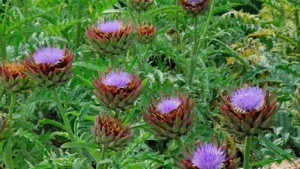
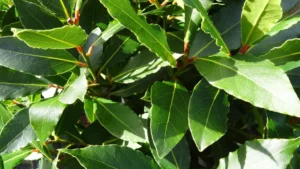

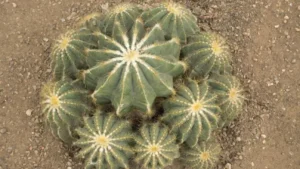
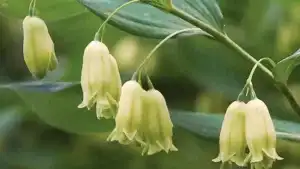


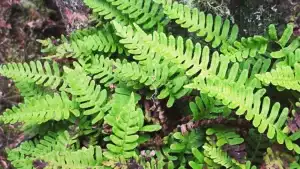
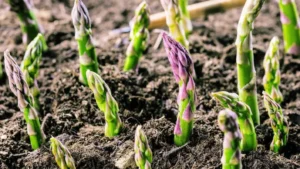
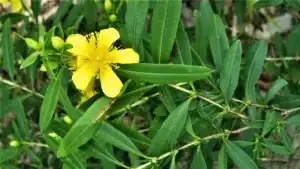

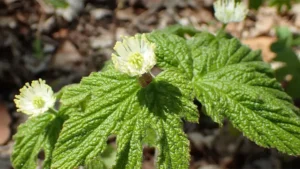
Leave your comment